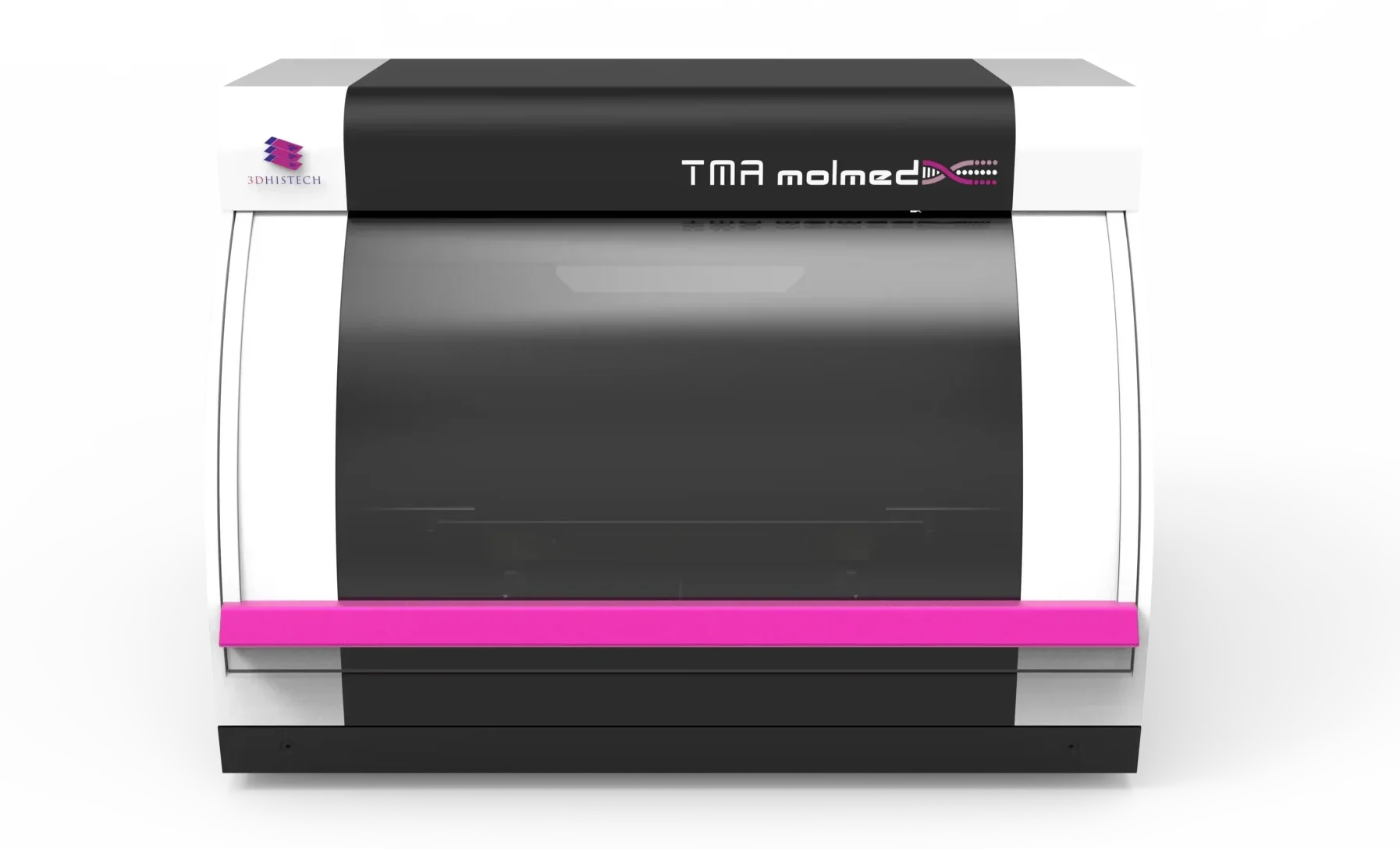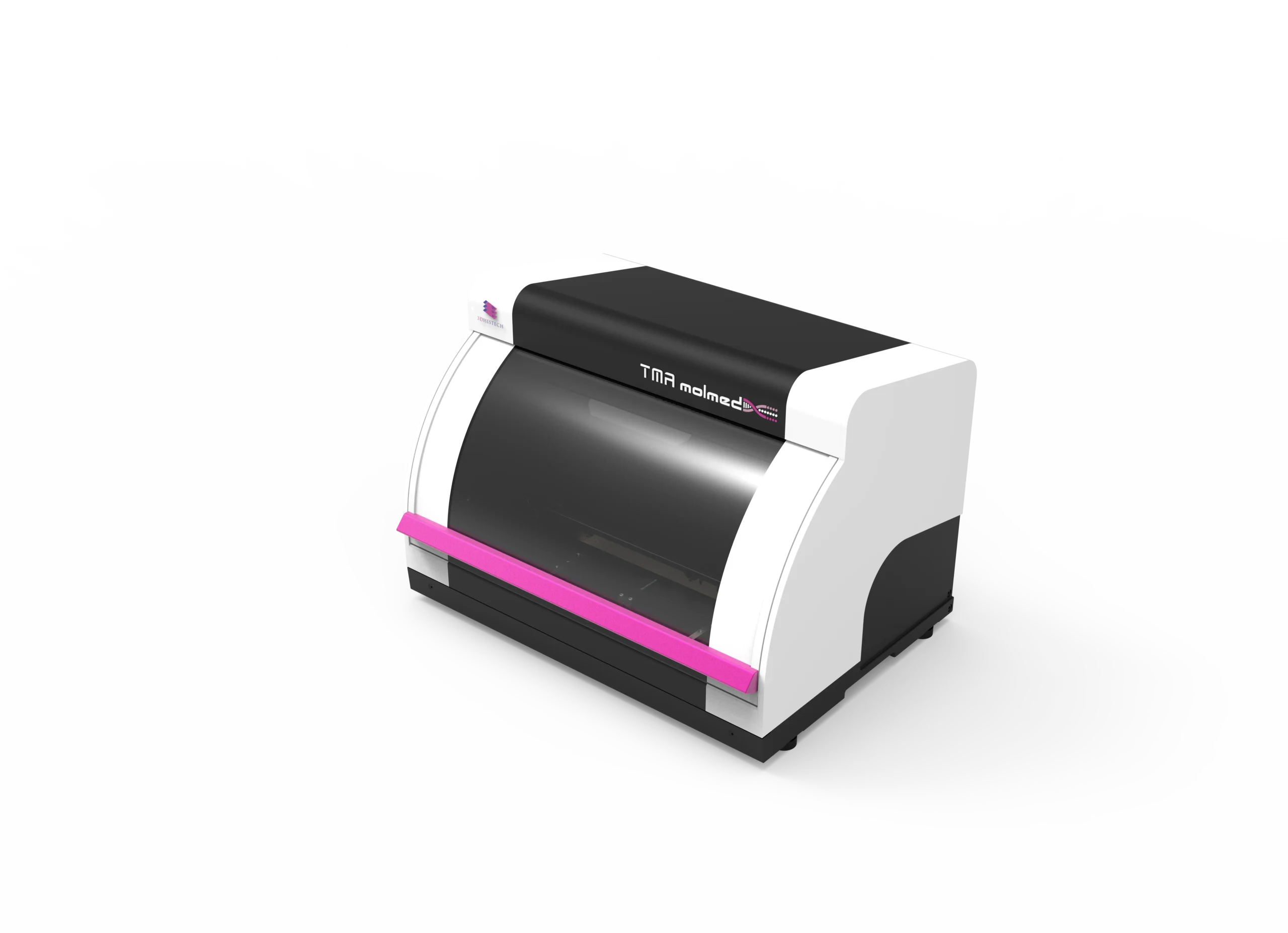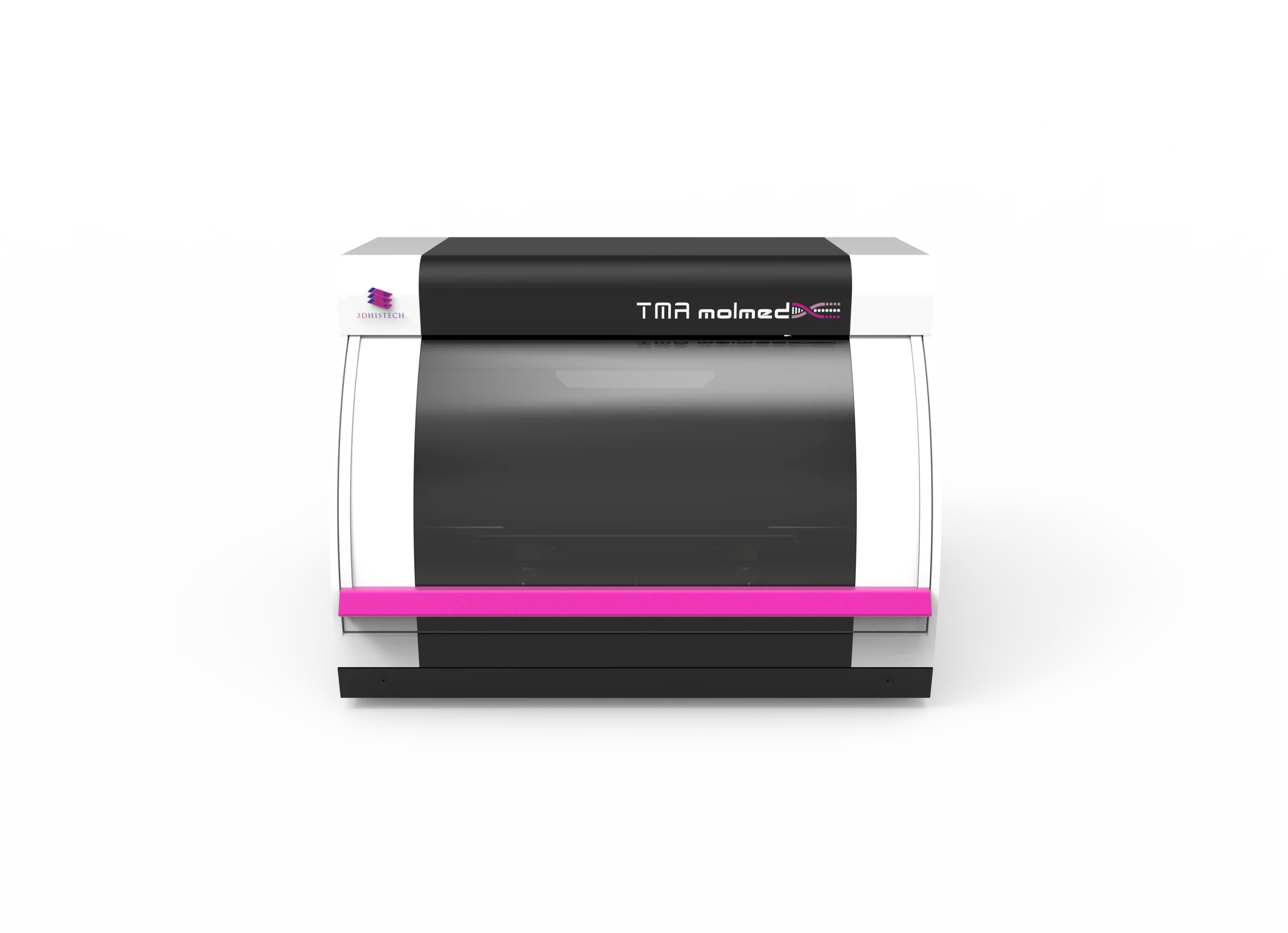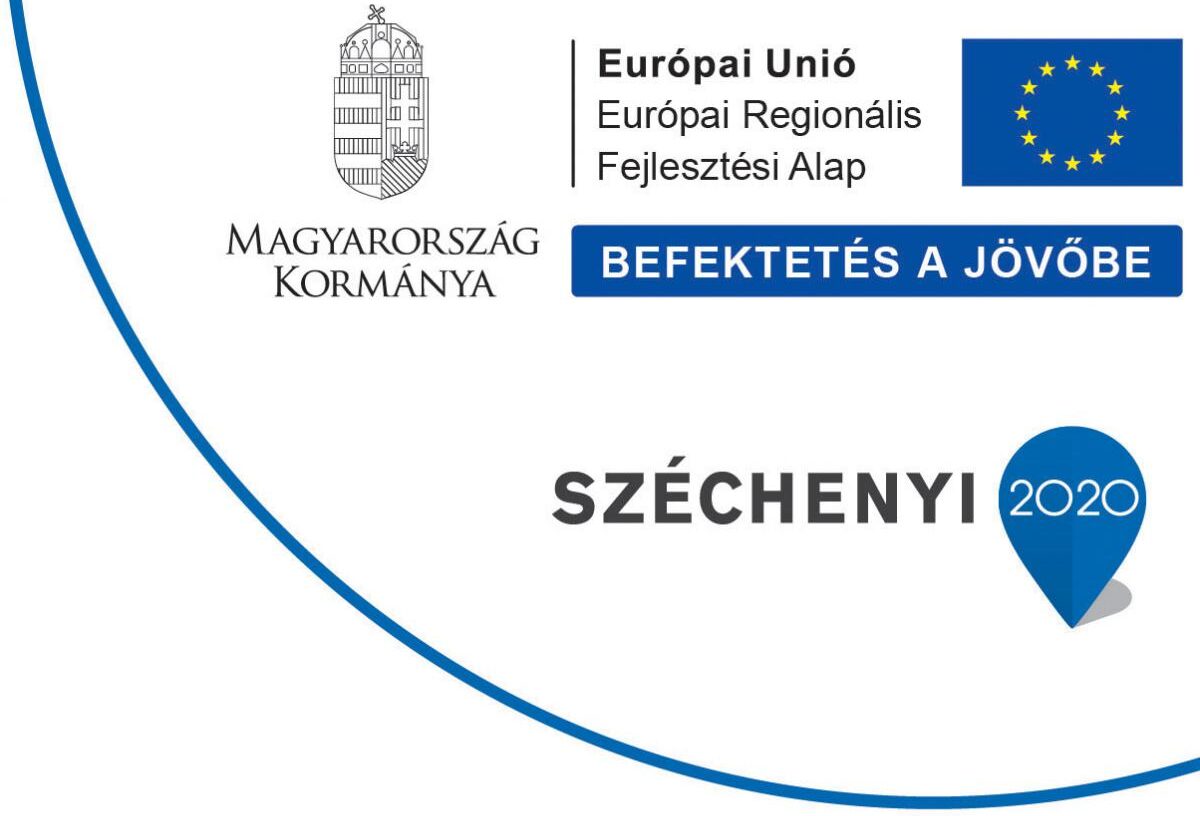TMA molmed – Modular Precision for Tissue Microarray Creation & Molecular Sampling
The TMA molmed is a fully automated, high-throughput system that seamlessly integrates tissue microarray (TMA) creation with laser microdissection-like molecular sampling, making it a powerful tool for molecular pathology, translational research, and biobanking. Its modular architecture accommodates six core sizes as small as 0.2 mm, offering unmatched flexibility for laboratories handling both standard and mega blocks.
With mega block compatibility, this dual-functionality instrument enables high-volume sample processing, supporting up to six standard donor blocks or two mega blocks with 30 PCR tubes, as well as configurations for three standard donor blocks or one mega block with a wellplate. Its open modular architecture supports PCR cassettes, microtiter plates, and customized tissue cassettes, ensuring seamless integration into molecular workflows for DNA, RNA, and protein extraction, including PCR, dPCR, and sequencing applications.
Engineered for efficiency and precision, the TMA molmed transfers 200-250 cores per hour and supports high-density TMA block creation, accommodating up to 558 cores per recipient block. Automated block height measurement ensures proper core alignment, while digital integration with MRXS digital slides and JPEG overlays enhances accuracy in tissue selection. A comprehensive data management system streamlines workflows with barcode tracking, automated project data saving, and multi-format export options.
Combining modular adaptability with high-speed automation, the TMA molmed sets new standards in TMA preparation and molecular research. Its customizable recipient block designs, six configurable core sizes, and automated molecular sampling to PCR tubes or wellplates ensure unparalleled precision, efficiency, and contamination-free sample handling for state-of-the-art laboratory applications.
Key Features:
Dual-Functionality for Tissue Microarraying and Molecular Sampling
- Combines high-precision tissue microarray creation with laser microdissection-like molecular sampling
- Supports both standard and mega blocks, ensuring flexibility for various research applications
Modular Architecture & Versatile Sample Processing
- Six configurable core sizes (as small as 0.2 mm) for precise sample extraction
- Mega block compatibility allows high-volume processing
- Up to 6 standard donor blocks or 2 mega blocks with 30 PCR tubes
- Configurations for 3 standard donor blocks or 1 mega block with a wellplate
- Open modular design supports PCR cassettes, microtiter plates, and customized tissue cassettes
Fully Automated, High-Speed Performance
- Transfers 200-250 cores per hour, optimizing workflow efficiency
- Accommodates up to 558 cores per recipient block, supporting high-density TMAs
- Automated block height measurement ensures precise alignment of tissue cores
Smart Automation & Digital Integration
- MRXS digital slide and JPEG overlay compatibility for accurate tissue core selection
- Barcode tracking, automated donor block imaging, and data saving enhance workflow efficiency
- TMA Control Software enables custom recipient block design and real-time project tracking
Seamless Molecular Workflow Integration
- Direct molecular sample extraction to PCR tubes or wellplates, eliminating cross-contamination risks
- Supports DNA, RNA, and protein extraction, enabling downstream applications like PCR, dPCR, and sequencing
- Multi-format data export (ods, xls, xlsx, csv) for seamless integration into laboratory information systems
- TMA Blocks (Donor or Recipient): 9
- Macro Donor or Recipient Blocks: 2
- TMA Mega Donor Blocks: 6
- PCR Tube Capacity: 30
- Wellplate Capacity: 1 wellplate
- Core Diameters (mm): 0.2 (surface), 0.6, 1.0, 1.5, 2.0, 3.0
Maximum Number of Cores per TMA Block:
- 0.6 mm: 558 cores
- 1.0 mm: 286 cores
- 1.5 mm: 135 cores
- 2.0 mm: 84 cores
- 3.0 mm: 45 cores
Speed: 200-250 cores per hour
- Barcode Reading: 1D and 2D (optional)
- Supported 1D Codes: Code 39, UPC-A, EAN 13, Codabar, Code 128, etc.
- Supported 2D Codes: Data Matrix, PDF417, QR Code, Aztec, MicroQR, etc.
- Supported Import Formats: .XLS, .XLSX, .ODS
- Supported Export Formats: .XLS, .XLSX, .ODS, .CSV
- Base Unit Dimensions (W x D x H): 552 x 400 x 400 mm
- Toolbox Dimensions: 310 x 110 x 155 mm
- Power Supply Unit Dimensions: 189 x 90 x 44 mm
- Base Unit Weight: 29 kg
- Toolbox Weight: 5 kg
- Display Weight: 7.1 kg
- Power Supply Unit Weight: 0.55 kg
- Camera: 12 MP Blackfly S USB3 digital imaging camera (Sony IMX226)
- Resolution: 4000 x 3000 pixels
- Pixel Size: 1.85 µm
- Frame Rate: 31 FPS
- Connection: USB 3.0
- Type: Multichannel RGB LED light source (transmitted light operation)
- Processor: Intel Core i9-14900 (24 cores, 32 threads) or similar
- RAM: 64 GB
- SSD Storage: 256 GB
- HDD Storage: 2 TB
- Graphics Output: 2x DisplayPort (4096 x 2304)
- Ports: 4x USB 3.2, 2x USB 2.0, 1x Ethernet (10/100/1000)
- Operating System: Windows 11 Pro (64-bit)
- Base Molds for Paraffin Blocks: 3 pcs
- Calibration Blocks (Normal/Mega): 1/1 pcs
- Modules:
- Drill Module (Takes 3 slots)
- Normal Module (Takes 1 slot)
- Wellplate Module (Takes 2 slots)
- Mega Module (Takes 1 slot)
- PCR Module (Takes 1 slot)
- Punch Needles (mm): 0.2, 0.6, 1.0, 1.5, 2.0, 3.0 (3 pcs each)
- Punch Pistons (mm): 0.2, 0.6, 1.0, 1.5, 2.0, 3.0 (3 pcs each)
- TMA Control Software – Manages TMA block design & creation
- SlideViewer – Digital Microscopy Software
- SlideMaster – Digital Slide Converter
Features:
- Layout design & tissue core selection
- Donor slide overlay with TMA markers
- Automated slide search & overlay
- Manual overlay option
- Barcode integration





